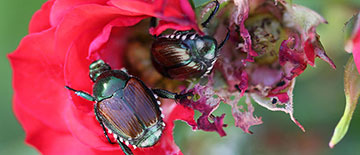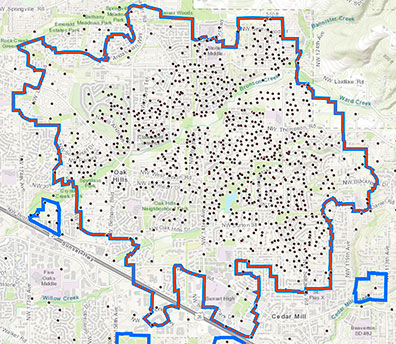Japanese Beetle eradication update


In 2016, a number of highly destructive and invasive insects were discovered in a few locations in Cedar Mill. The Japanese Beetle has devastated agriculture and home gardens in the East and Midwest, and the Oregon Department of Agriculture (ODA) wanted to get ahead of the infestation before the same thing happened here. Plans began for treating the irrigated turf (well-watered lawns) where the beetles prefer to lay their eggs.
By Spring 2017, ODA had determined that a granular larvicide treatment, Acelepryn G®, was the best option. It sinks into the soil, and when the beetles’ eggs hatch in late summer, they eat the larvicide and die. Additionally, ODA instituted a quarantine on yard waste from the area, requiring that all garden waste be taken to one location where it could be treated. Cedar Mill Garden Club had to stop holding its yearly plant sale because some of the plants came from gardens within the affected area.

A broad public information campaign began. Residents within the treatment area were asked to give permission for ODA contractors to treat yards each spring. Trapping has continued from the beginning. (Those green plastic containers that smell like roses attract the beetles. Some are equipped with cameras and transmitters!)
The map changed as trapping showed additional affected areas. However, the total number of beetles dropped each year, showing that the plan was working. Last year, areas with a high density of beetles were also treated with a foliar (leaf) spray.
Here’s what the ODA says now:
We have officially wrapped up our 2020 season. I want to thank everyone who helped make this turbulent year happen. Overall, 98.5% of you consented to treatment this year. With your help we treated 12,200 residences, which came to roughly 4,325 acres.
This year we trapped 4,490 Japanese beetles in total; 4,218 in the Cedar Mill area. The overall number of beetles trapped in 2020 was down 42% from the previous year. There was a 58% reduction in the number of beetles trapped within our 2019 treatment boundary as a result of the 2019 granular and 2020 foliar treatments. We saw a 67% decrease within the boundaries of the supplementary foliar treatment.
In order to eradicate this pest, we plan to continue our treatment next season. We will continue our aggressive approach in 2021 while we have the upper hand. We are currently planning our 2021 treatment boundary and will share it once it is finalized.
For more information of the Japanese beetle eradication project please visit our website: https://www.japanesebeetlepdx.info
ODA’s Ashley Toland says that in addition to permitting treatment on your property, the two most important things to remember are to avoid giving plants to anyone, either in or out of the affected area; and to make sure that all your yard waste is taken to an approved dump site. Several additional “satellite” areas of infestation were detected this year and were very likely the result of these two practices.





